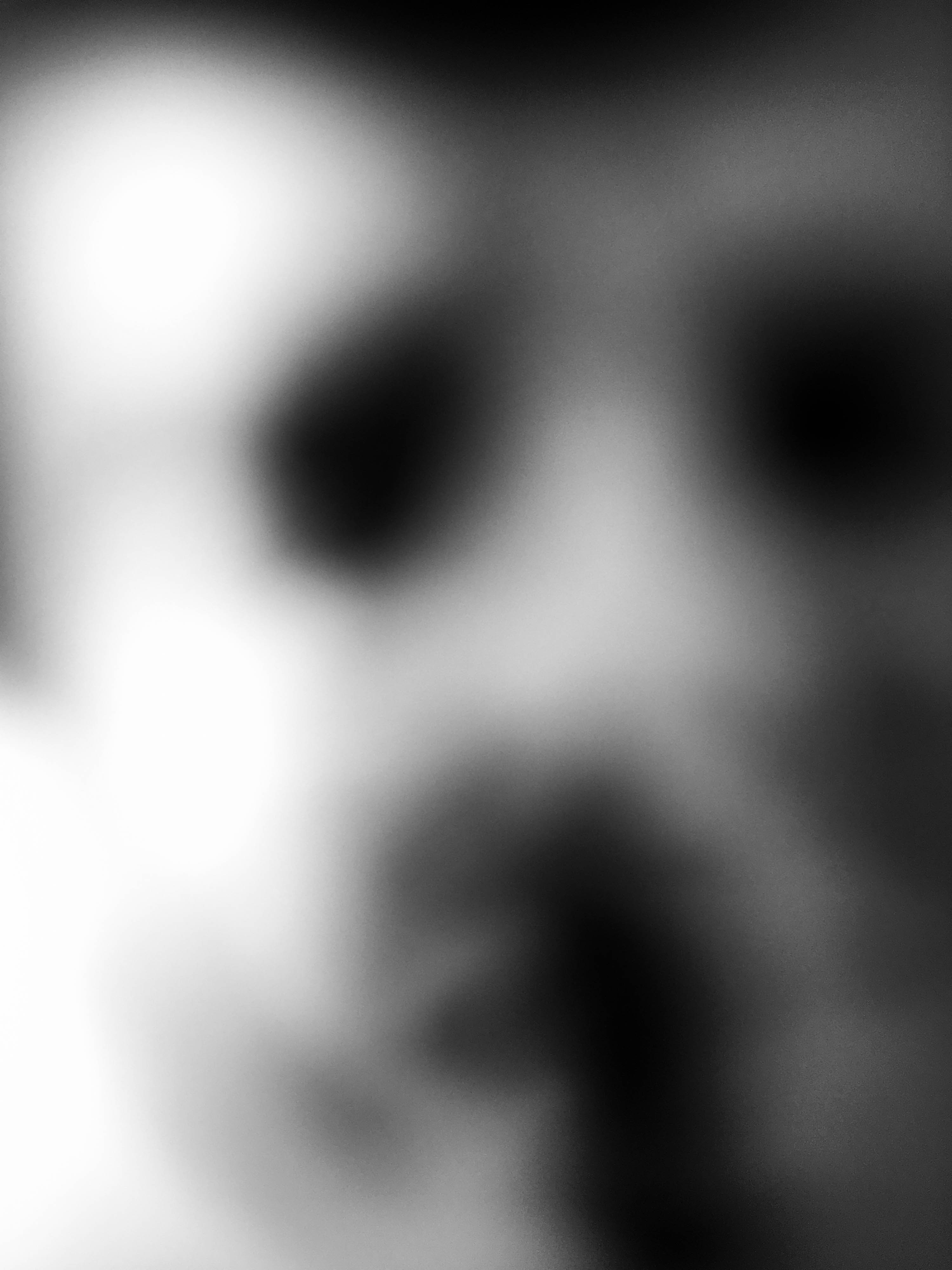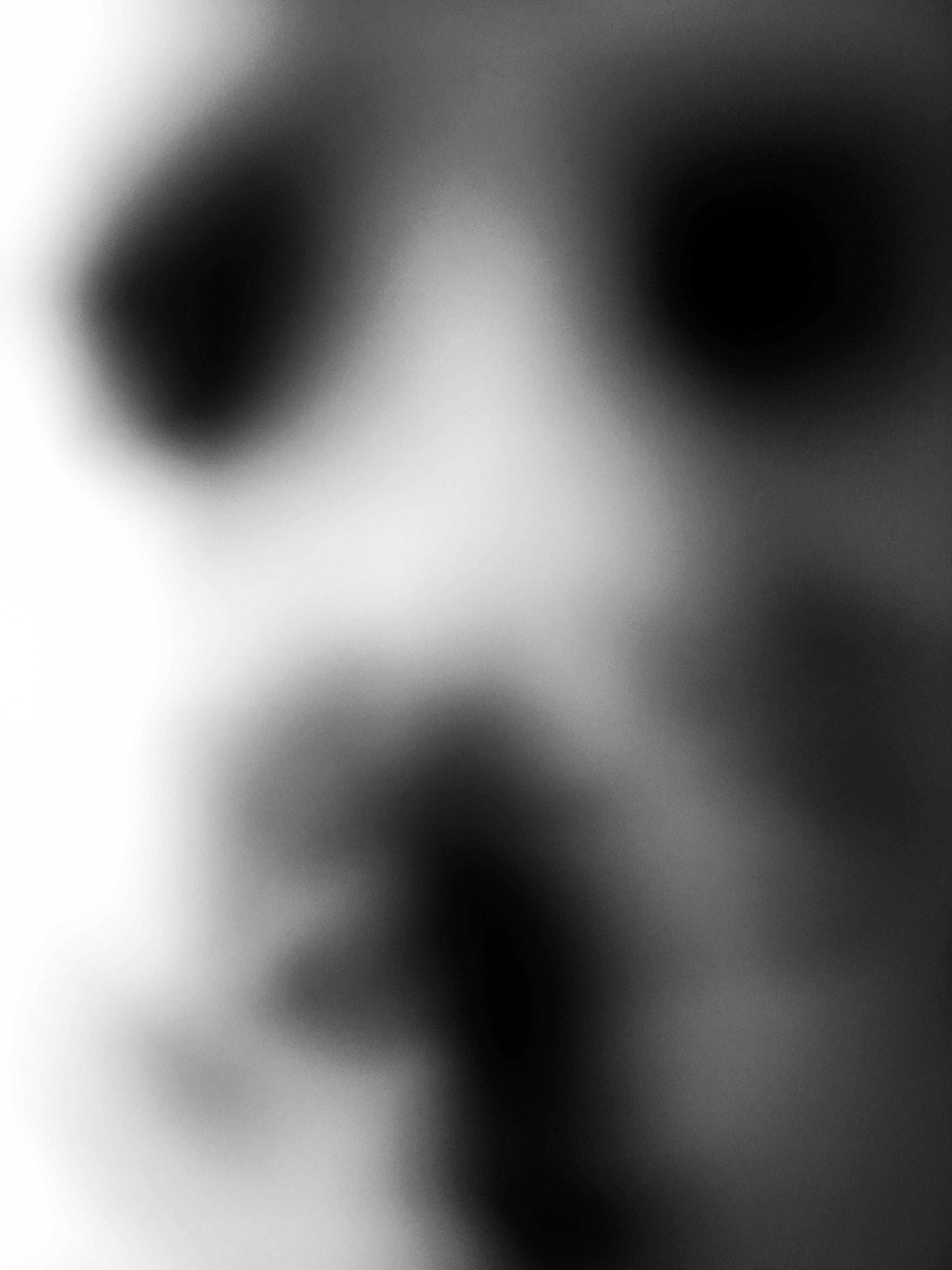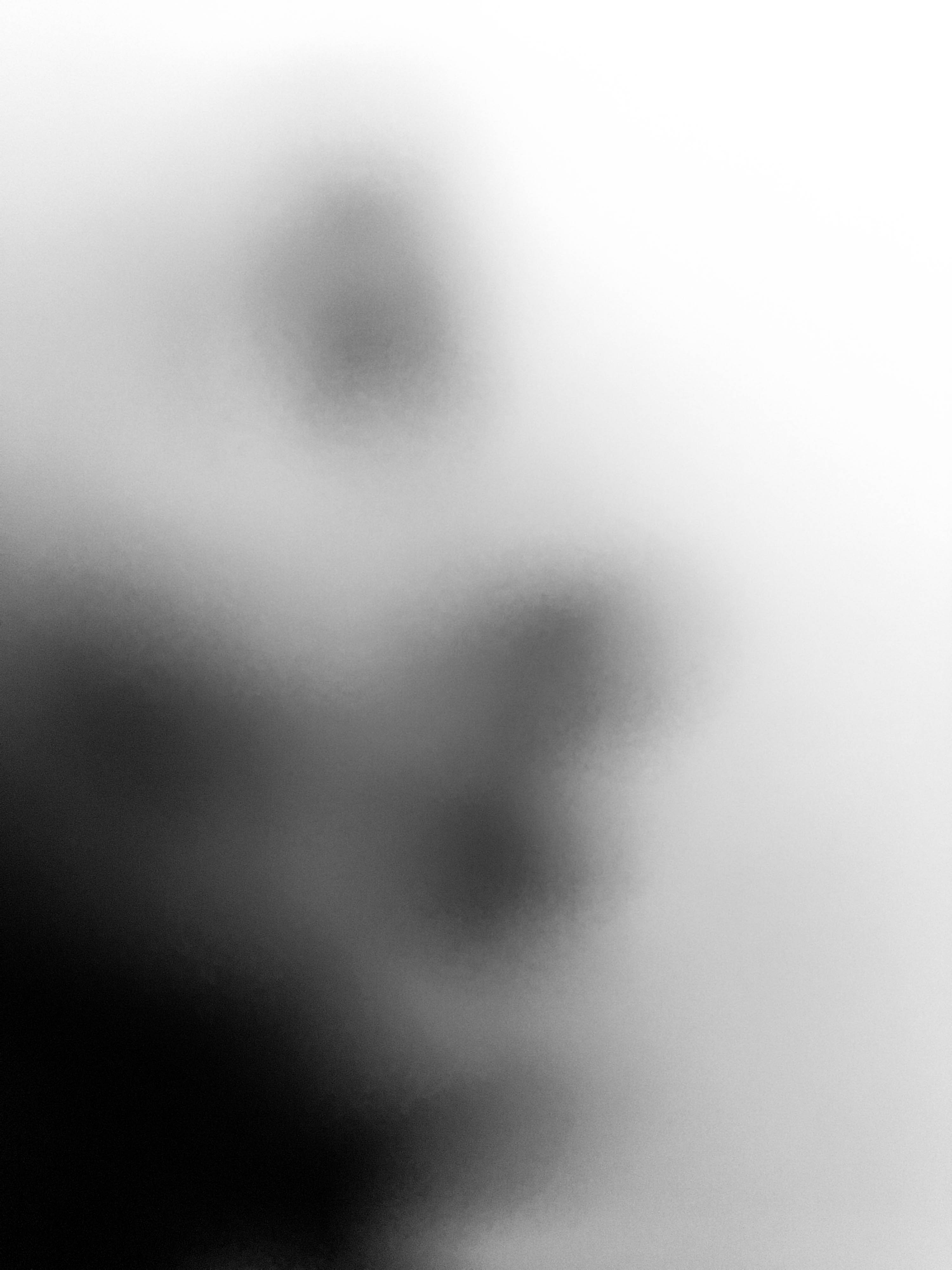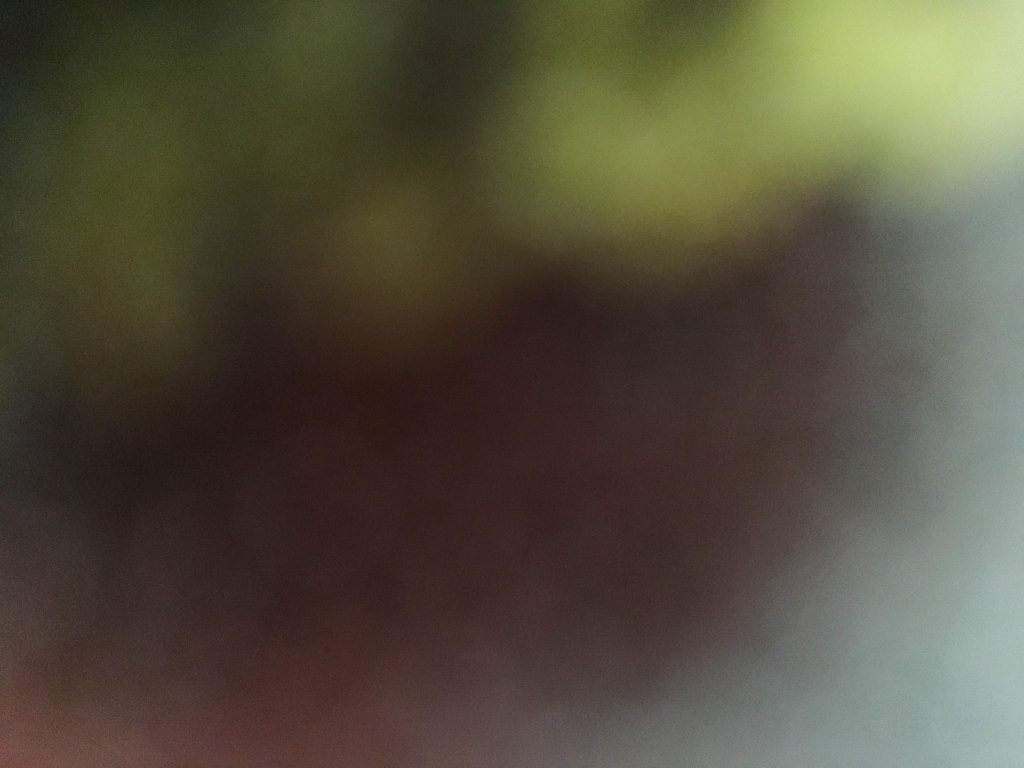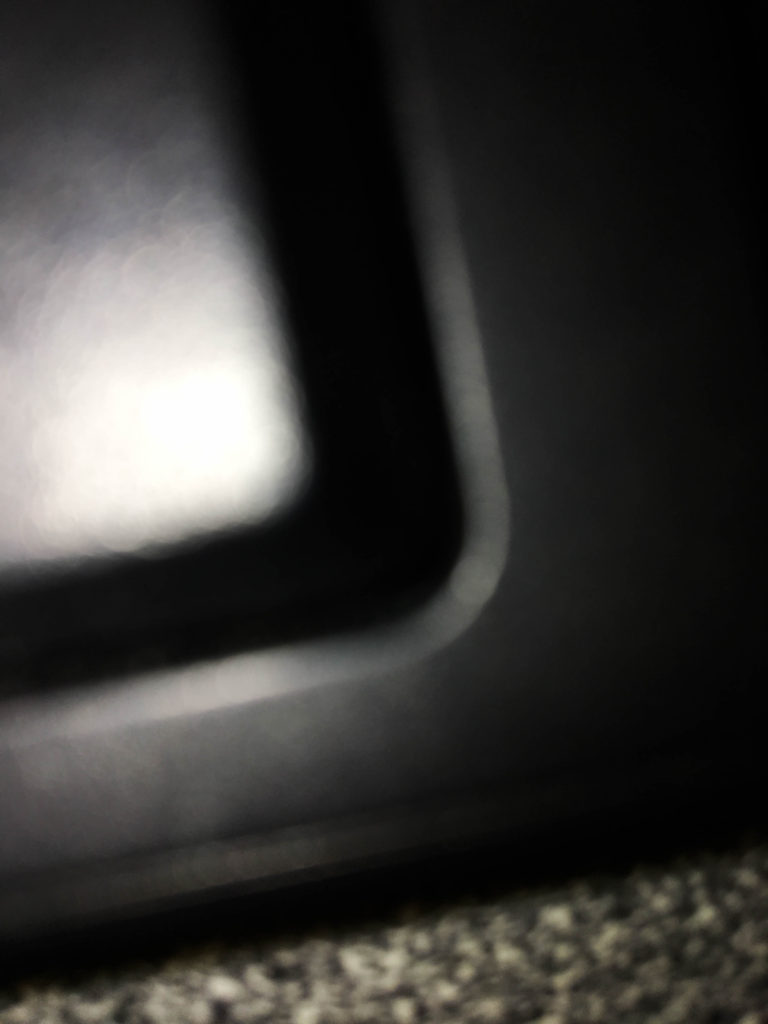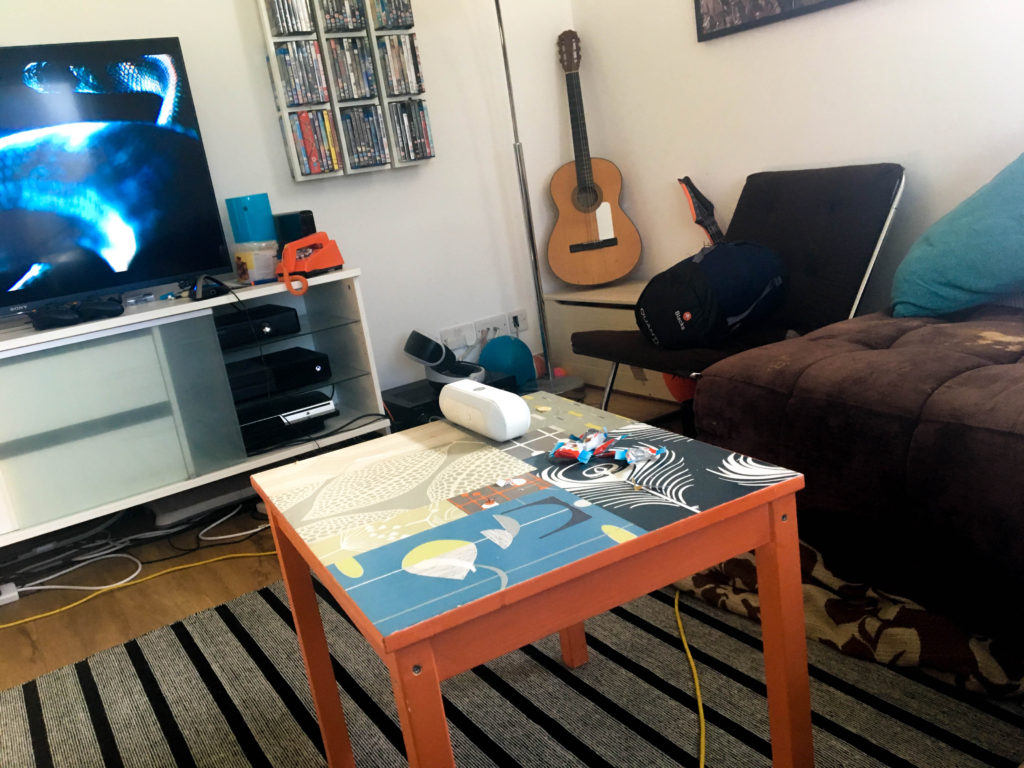When experimenting in my previous shoot I started to focus on the faces on these record covers. Due to them being in black and white and also in poor quality gave them a ghostly edge when I decided to bring the camera close and blur their faces. I made their faces look less human and eerie. It removed any detail from their faces and in a way removed there identity. This doesn’t really follow the previous theme of color. However, it has inspired me to think of abstraction as more than just color. Maybe I will focus on color photos as well as black and white.
Category Archives: Experimenting
Filters
Abstract Experimentation///color
After my brief shoot on breaking the photographic rule of audience, I really wanted to explore abstraction and color. I did this by taking close up shots of front covers of LP records I had in my bedroom. Many of these were records from the 70’s this meant bright colors. I also took close ups of other colorful objects I found in my bedroom. Having these photos out of focus turned them into solid colors and in most cases showing no texture. It resembles another form of color field painting I studied previously. I selected colors carefully as I wanted them to complement each other. The helpful thing with using records is that the artist or record company probably would already chosen those colors as they work together. This meant all I had to do was to take these photos at the right angle capturing the right colors in the frame. This is just a small start to what I want to do in my project.
07.02.18 shoot // inspired by Rinko Kawauchi
After researching a lot about Rinko Kawauhi’s previous work and photo series I wanted to do my own photo shoot using her images as inspiration. The main aim of the shoot was to capture things with little significance and to portray them in a unique way that shows their pure beauty.
This shoot was done on the 7th of March at Queens Valley Reservoir. I used a Canon camera to capture the images. The shoot was inspired by the many images by Rinko Kawauchi. Her images contain a spiritual feeling to them and this is what I wanted to create in my own edits. The shoot was just a simple experimental shoot because I wanted to see what different abstract images I could capture in an environment I’ve seen many times. When searching for more particular objects and scenes you become more aware of the environment and you take in much more. I am very happy with the images I managed to collect.




EDITS
When editing the images, I knew I wanted them to be simple and pure. I aimed to keep the natural colours and not manipulate the originals too much. I simply made the images brighter and turned up the vibrancy of the images so that the colour’s were stronger which in turn made the image more appealing.
Task 2: Make a Manifesto
Following on from your first task of Rule Breaking your next task is write your own manifesto with a set of rules that you follow creatively in making a new set of photographic images, experimental film-making or video art.
A manifesto is a published verbal declaration of the intentions, motives, or views of the issuer, be it an individual, group, political party, government or an artistic movement.
In etymology (the study of the origin of words and the way in which their meanings have changed throughout history), the word manifesto is derived from the Italian word manifesto, itself derived from the Latin manifestum, meaning clear or conspicuous.

Political manifestos from Britains three main parties, Labour, the Conservatives and Liberal Democrats in the last election in 2017.
Here a few examples of manifestos made by Jersey politicians

Manifesto by Senator Lyndon Farnham

Futurism Manifesto written by the Italian poet Filippo Tommaso Marinetti was published in the French newspaper Le Figaro in 20 February 1909. In the manifesto Marinetti expresses an artistic philosophy, Futurism, that was a rejection of the past, and a celebration of speed, machinery, violence, youth and industry.
MANIFESTO OF FUTURISM
- We intend to sing the love of danger, the habit of energy and fearlessness.
- Courage, audacity, and revolt will be essential elements of our poetry.
- Up to now literature has exalted a pensive immobility, ecstasy, and sleep. We intend to exalt aggressive action, a feverish insomnia, the racer’s stride, the mortal leap, the punch and the slap.
- We affirm that the world’s magnificence has been enriched by a new beauty: the beauty of speed. A racing car whose hood is adorned with great pipes, like serpents of explosive breath—a roaring car that seems to ride on grapeshot is more beautiful than the Victory of Samothrace.
- We want to hymn the man at the wheel, who hurls the lance of his spirit across the Earth, along the circle of its orbit.
- The poet must spend himself with ardor, splendor, and generosity, to swell the enthusiastic fervor of the primordial elements.
- Except in struggle, there is no more beauty. No work without an aggressive character can be a masterpiece. Poetry must be conceived as a violent attack on unknown forces, to reduce and prostrate them before man.
- We stand on the last promontory of the centuries!… Why should we look back, when what we want is to break down the mysterious doors of the Impossible? Time and Space died yesterday. We already live in the absolute, because we have created eternal, omnipresent speed.
- We will glorify war—the world’s only hygiene—militarism, patriotism, the destructive gesture of freedom-bringers, beautiful ideas worth dying for, and scorn for woman.
- We will destroy the museums, libraries, academies of every kind, will fight moralism, feminism, every opportunistic or utilitarian cowardice.
- We will sing of great crowds excited by work, by pleasure, and by riot; we will sing of the multicolored, polyphonic tides of revolution in the modern capitals; we will sing of the vibrant nightly fervor of arsenals and shipyards blazing with violent electric moons; greedy railway stations that devour smoke-plumed serpents; factories hung on clouds by the crooked lines of their smoke; bridges that stride the rivers like giant gymnasts, flashing in the sun with a glitter of knives; adventurous steamers that sniff the horizon; deep-chested locomotives whose wheels paw the tracks like the hooves of enormous steel horses bridled by tubing; and the sleek flight of planes whose propellers chatter in the wind like banners and seem to cheer like an enthusiastic crowd.
In 1924 French Poet, Andre Breton published a Surrealist Manifesto which sets out specific terms on which to be creative and make art as a reaction against another art movement, Dadaism.

POEM
A burst of laughter
of sapphire in the island of Ceylon
The most beautiful straws
HAVE A FADED COLOR
UNDER THE LOCKS
on an isolated farm
FROM DAY TO DAY
the pleasant
grows worse
coffee
preaches for its saint
THE DAILY ARTISAN OF YOUR BEAUTY
MADAM,
a pair
of silk stockings
is not
A leap into space
A STAG
Love above all
Everything could be worked out so well
PARIS IS A BIG VILLAGE
Watch out for
the fire that covers
THE PRAYER
of fair weather
Know that
The ultraviolet rays
have finished their task
short and sweet
THE FIRST WHITE PAPER
OF CHANCE
Red will be
The wandering singer
WHERE IS HE?
in memory
in his house
AT THE SUITORS’ BALL
I do
as I dance
What people did, what they’re going to do
An example of a poem published as part of Breton’s Surrealist manifesto.
Tasks
1. Research and read at least one political manifesto and one manifesto from an artistic group or movement. Describe differences and similarities used in their use of language, metaphor and vision – 1 blog posts.
2. Analysis: from your chosen artistic manifesto, choose at least two key art works for further analysis that have been made as response to the rules/ aims/ objectives of the manifesto. Describe techniques used, interpret meaning/metaphor, evaluate aesthetic quality – 1-2 blog posts.
3. Planning: Write a manifesto with a set of rules (5-10) that provide a framework for your new shoots and overall project. Describe in detail how you are planning on developing your work and ideas in the next two weeks. Think about what you want to achieve, what you want to communicate, how your ideas relate to the themes of FREEDOM and/or LIMITATIONS – 1 blog post.
4. Record: Produce at least one shoot by Mon 12 March.
5. Experiment: Edit a selection of 5 images with annotation – 1 blog post.
6. Evaluate: Choose your best image and evaluate with reference to your manifesto and contextual references – 1 blog post.
7. Present: Print best image and prepare a 1 min presentation Wed 14 March in class around the table.
Extension: Write a new set of rules and repeat the above process.
Help & Support:
See link to manifesto in Wikipedia which has a hyperlinks to many manifestos, both political and artistic.
How to write a manifesto? Read more here
A manifesto is a statement where you can share your…
– Intentions (what you intend to do)
– Opinions (what you believe, your stance on a particular topic)
– Vision (the type of world that you dream about and wish to create)
See book: The Photographer’s Playbook on page 45 and David Campany’s: What to Photograph?

Here are class lists of what to photograph?
Class 13 A
Class 13 D
Class 13 E
Political Manifestos – in Jersey
Political parties makes a manifesto that sets out their political values and views on issues such as education, health, jobs, housing, environment, the economy etc and pledge a set of policies on what they would do if they got elected.
As there will be an election in Jersey during the exam preparation and the fact that you are all eligible to vote it makes sense to explore what manifestos exist in local politics. Unlike the UK, Jersey doesn’t have a political system with large parties, such as Labour, Conservative, Liberal Democrats and so on.
The parliamentary body responsible for adopting legislation and scrutinising the Council of Ministers is the Assembly of the States of Jersey. Forty-Nine elected members, 8 island-wide Senators, 29 Deputies and 12 Constables representing each parish sit in the assembly. There are also five non-elected, non-voting members appointed by the Crown (the Bailiff, the Lieutenant Governor, the Dean of Jersey, the Attorney General and the Solicitor General). Decisions in the States are taken by majority vote of the elected members present and voting.
Find out more here on the official Government website: gov.je
In Jersey there is only one small political party Reform Jersey (3 members). Some politicians, such as Senator Philip Ozouf, Senator Lyndon Farnham publish a manifesto in advance of an election so that the public can learn about their political views. Hustings in each Parish will be taken place during the month of April leading up to the election day 9 May 2018.
Artistic Manifestos
Here is a a list of art movements that you may use as contextual research. Many of them produced various manifestos
Dadaism, Futurism, Surrealism, Situationism, Neo-dadaism, Land/Environmental art, Performance art/Live art, Conceptualism, Experimental filmmaking/ Avant-garde cinema.
Here are a list of artists/ photographers that may inspire you associated with the above art movements and isms:
Vito Acconci, John Baldessari, Yves Klein, Bas Jan Ader, Erwin Wurm, Chris Arnatt, Richard Long, Hamish Fulton, Joseph Beuys, Chris Burden, Francis Alÿs, , Sophie Calle , Nikki S Lee, Claude Cahun, Dennis Oppenheim, Bruce Nauman, Allan Kaprow, Mark Wallinger, Gillian Wearing, Marcel Duchamp and the Readymade, Andy Warhol’s film work, Steve McQueen, Sam Taylor-Johnson, Marina Abramovic, Pipilotti Rist, Luis Bunuel/ Salvatore Dali: , Le ChienAndalou, Dziga Vertov: The Man with a Movie Camera
A few Youtube clips
Gillian Wearing: Dancing in Peckham
Mark Wallinger: Hymn
Luis Bunuel/ Salvatore Dali: Un Chien Andalou
Marcel Duchamp: Ready-mades
experiment video // seeing
https://www.youtube.com/watch?v=bpr0PAa2W0E
This video is an experiment that I did to create a starting point for my project. I want to create a cinematic film using scenes similar to Rinko Kawauchi’s images. By fragmenting a particular object you capture an abstract version of the real thing. Its this concept that I want to draw in on. As well as taking still images, I also want to eventually create a film using short clips of different scenarios, still based on an abstract vision. Here are some screen shots of different aspects within the film.
The video focuses on the movement within nature. Its a short video because its just an experiment. I tried to include different angles, shapes and close ups compared to long shots. I’ve never made film before so I wanted to start on a simple theme. 


Breaking The Rules
http://www.huckmagazine.com/art-and-culture/photography-2/eight-photography-rules-worth-breaking/
#1 The Rules of Objectivity
#2 The Rule of Audience
#3 The Rule of Manipulation
#4 The Rule of Reality
#5 The Rule of Technicality
#6 The Rule of Ownership
#7 The Rule of the Camera
#8 The Rule of Rule Breaking
The Rule of the Camera – Part 1
For this image, I interpreted the Rule of the Camera as being a collection of images that were created by having slightly odd camera techniques in terms of settings but also camera movement. This image below was in reality taken as a mistake however all my images were essentially mistakes in this particular shoot as it was about exploring the boundaries of the camera. The image below is an image of a bay that was taken at night with very long shutter speed of 30 secs with an ISO that was slightly lower than I would normally take. As I took the image i ever so slightly gave a little wobble o the camera which created this red light shooting through the sky which is of a lighthouse, however I like the image of the bay is still well in focus. This links to my current project as in a later date, I feel I would be interested in exploring light as this has a direct relationship with nature.

The Rule of the Camera – Part 2
For these last 3 images I wanted to explore a relationship with the present and the past by taking images of structures that have survived time since before cameras existed. This represents the rule of the camera as it captures the spirit of time of when ideally cameras couldn’t capture at the time they were built. The first is an image of an old harbour, the second is a sea fortress and the third is a chapel, all surviving and existing for centuries. This relationship of shared history among each structure where for centuries people have lived and survived off these locations reflects the rule of the camera because I believe it captures not the process of survival, but the legacy of how these places have been used to survive which links, particularly the first two images.



Breaking the rules///The Rule of Audience
Planning
The rule of audience suggest that an artists work should appeal to someone or a group of people. This is the rule I am going to break. I will try to take photos that won’t appeal or impress anyone. I won’t make photos that directly relate to a person or group of people. I want to make photos that have no meaning, nothing for someone to relate to, completely random photos that have no artistic value.
Recording
I decided to first take photos that were out of focus and blurred. Initially this wasn’t meant to look good however, due to it being to abstract and having bright colors, these photos were liked by many people. In some cases you could say I broke the rule of Technicality but this wasn’t the rule I was breaking so even though I made photos people liked they have to be consider a failed attempt as people liked them. The photos below was creating below with the same mind set however this was my most popular photo. For the same reasons as before these photos did not reasons before it did not hit the brief I set for myself.
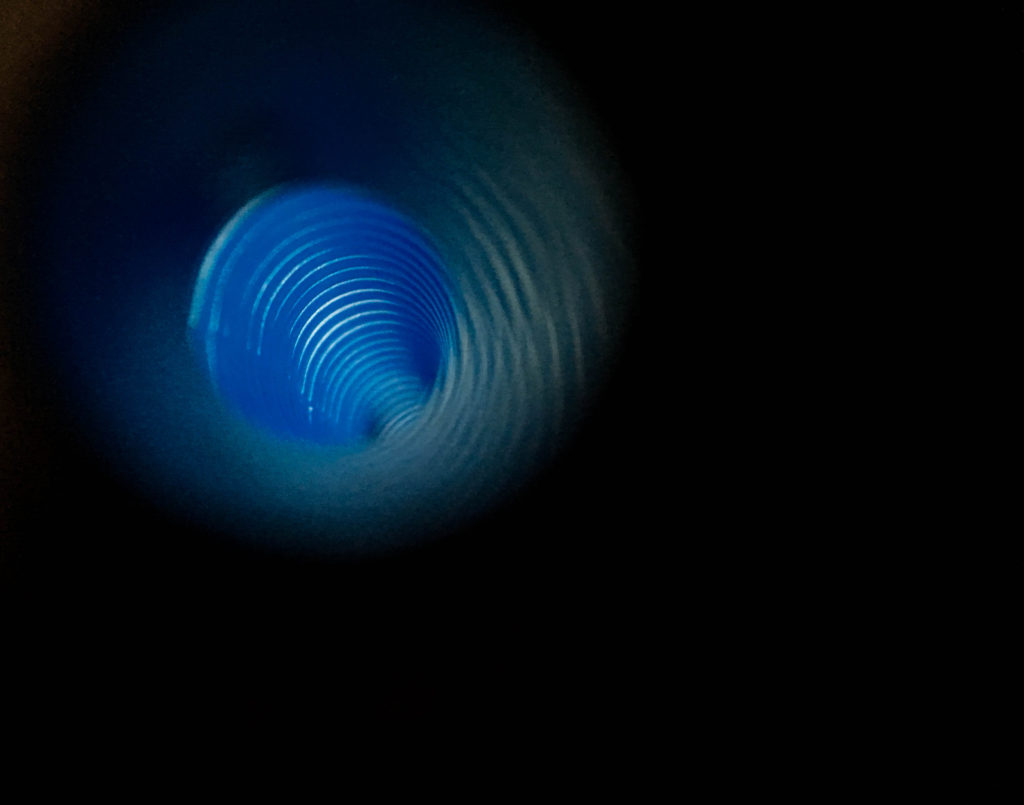

These photos below did succeed in my goal of breaking the rule of Audience. Nobody I have shown these photos liked them as they showed no skill, nothing interesting and all round boring. I have created photos nobody liked or appreciated. Although I have completed the objective I set myself I personally even I do not like these photos and wish not to continue with this any further. However the photos above is something I would like to continue to explore. Abstraction is something I have lightly touched on in my previous projects however I’d like to explore this further fulling immersing myself in color, distortion and composition. This task has made me realize that the rule I want to continue to break is Technicality.
manipulation shoot // images and edits
SHOOT
I did the shoot for the manipulation task on 27th February after school. The lighting was difficult because I needed it to be sunny to be able to capture the different shadows and shapes I wanted to use to manipulate, however, the the cloud kept covering the sun so It made it a lot harder. I decided to do the shoot in my garden because I wanted to see what different abstract images I could take in a place that was familiar to me. Before doing the shoot, I knew what types of angles and images I wanted to create. I wanted to get some reflections, some sky images with the clouds and a lot of images of branches and leaves. Also a lot of shadows and unusual shapes. I am happy with the quality and type and amount of images I managed to take. Since I managed to capture a lot of different perspectives it meant I could create a lot of different edits. 




EDITS
When editing the original images from the shoot, I used Laura El Tantawy a lot for inspiration. She used a lot of natural pastel colours which I also wanted to include in my final edits. I wanted most of the images to not look to manipulated and to look natural as much as possible. I uses a lot of images of reflections to use in the double exposure edits because layering a shadow over this could look like a natural non manipulated image.



I used Photoshop to edit all my images using the double exposure settings. I edited the colour and exposure of most of the images to suit the style I wanted to get. The images are very soft and bright because the nature suited this theme.










I am very happy with my final edits and I have managed to achieve a wide variation of different angles and edits. I believe I want to carry on with this concept and style for the rest of my project, experimenting with shadow, light and shapes.
manipulation shoot // ideas
I wanted to start my project by breaking the rules of photography. We have the freedom express ourselves in what way we want to, and this should be the same within art and photography. The rule I decided to break was the rule of manipulation because I wanted to be really creative it and see what unusal view points I could create.
Here are two mid maps full of different ideas for the manipulation shoot. Some of the main ideas I had was staging a scene, such as using tableaux photography. Another idea I had was to physically manipulate the final images by either burning them, painting over them, cutting them and destroying them in some way. However the idea that I choose to stick with was digitally manipulating an image using Photoshop and light room.

 The main photographer that has inspired me for this shoot is the photographer Laura El Tantawy. I love her abstract images full of colour and unusual framing. I loved the images by Laura El Tantawy, with the abstract angles and colorful themes and I decided to use her ideas for my shoot. I wanted to focus on nature and the shadows and shapes it creates. This is my initial idea for the manipulation task, because I also plan to do some manipulation by hand using film photography, but again focusing on the abstract unseen angles.
The main photographer that has inspired me for this shoot is the photographer Laura El Tantawy. I love her abstract images full of colour and unusual framing. I loved the images by Laura El Tantawy, with the abstract angles and colorful themes and I decided to use her ideas for my shoot. I wanted to focus on nature and the shadows and shapes it creates. This is my initial idea for the manipulation task, because I also plan to do some manipulation by hand using film photography, but again focusing on the abstract unseen angles.





Provoke | Yutaka Takanashi, Takuma Nakahira and Daido Moriyama.
Changing perceptions and breaking boundaries | Japanese Photography
provoke
WHY : challenge the idea that photography has its own language, independent of words.Following the decimation and rebuilding of Japanese society after the Second World War, photography played an important part in a new self-definition of Japanese visual style, set apart from Western influences.
Provoke was a magazine with only three issues in the late 1960s, but its influence continued into the 1970s and 80s. It set itself apart from the photojournalistic style of the day, looking for a more subjective voice and validation of the person behind the camera. The images are often grainy and disorderly, reflecting the social and political upheavals taking place across the nation. It also constrasted with the glossy imagery of commercial magazines.
Takuma Nakahira and Yutaka Takanashi were founding members of the Provoke group. Daido Moriyama joined a little later, bringing with him his early influences of Cartier-Bresson, but with a desire to be a witness with more self-expressive intent.

|
The main subject of this project is Provoke (Purovōku), an experimental magazine founded by photographers Yutaka Takanashi and Takuma Nakahira, critic Koji Taki, and writer Takahiko Okada in 1968. The magazine’s subtitle read as: shisō no tame no chōhatsuteki shiryō (Provocative documents for the sake of thought). Photographer Daido Moriyama, the photographer most often associated with the publication, did not join the magazine until the second issue. Provoke lasted only three issues with a small print run, but was tremendously influential. |
Provoke argued that the photographer can capture what cannot be expressed in words, presenting photographs as “documents” for others to read. In Japanese, the visual style of the photographs in Provoke has been described as: ‘are-bure-boke‘, which translates as ‘grainy/rough, blurry, out-of-focus‘. On 31 March 1970 the Provoke collective published the book Mazu tashikarashisa no sekai o suterō: Shashin to gengo no shisō (First, Throw Out Verisimilitude – Thoughts on photography and language). It was to the be the last publication of this short lived but influential group. Each of the participants went on to establish their own individual visions in their subsequent careers.
Contextual history
>> Daido Moriyama wants you to WATCH THIS <<
“Photography was too explanatory, too narrational for me. […] It was natural for me to join Provoke. […] They said they were photographing atmosphere. But I was very precise and careful. […] But my work changed after I saw how they worked. I saw that I could not control everything. I understood that photography is only a fragment. I used to be a photographer who interprets things via language. And then Provoke changed me.”
— Yakuta Takanashi
“The ambitious mission of Provoke to create a new photographic language that could transcend the limitations of the written word was declared with the launch of the magazine’s first issue. The year was 1968 and Japan, like America, was undergoing sweeping changes in its social structure. A questioning of traditional social conventions and a loss of confidence in existing political powers was happening in many creative disciplines across Japan and formed the foundation that fuelled Provoke’s mission. Unified under a manifesto that advocated conceptualism over realism, Provoke‘s photographers and writers moved beyond issues of what to photograph, and sought to uncover and question the essential nature of photography itself. The visual results flouted the precision of earlier documentary modes in favour of a less focused imagery that allowed for chance and the unknown to reveal itself in the photographic process.”
— Russet Lederman, 2012
Other photographs by Provoke Group members:
Your response to PROVOKE
- Look carefully at the photographs published in the various issues of Provoke. How would you describe them? Write a list of words that might be used to capture the visual qualities, subjects and impact of these photographs on the viewer.
- What does the word Provoke suggest to you? What is provocative about these photographs? Why do you think this was chosen as the title of the publication?
- Reflect on your own feelings about the society in which you live and the state of photography. What kinds of images and ways of making photographs seem appropriate to you for documenting these feelings and attitudes? Where would you go to make these pictures? Given Moriyama’s use of a consumer compact camera (rather than an expensive, professional rangefinder or SLR) would it matter to you what equipment you used?
- In order to explain the approach they were taking to photography in Provoke, the participants published a short manifesto. There is a long history of artists, especially in the twentieth century, banding together and writing manifestos. Imagine you decided to collaborate with classmates and/or friends to create an artistic collective. What would you write in your manifesto?
- Daido Moriyama has said: “[My] photos are often out of focus, rough, streaky, warped, etc. But if you think about it, a normal human being will in one day perceive an infinite number of images, and some of them are focused upon, others are barely seen out of the corner of one’s eye.” What do you think he means? Watch the film Daido Moriyama: In Pictures and make some notes. How would you summarise his attitude to photography?
- It is often more difficult to make ‘wrong‘ photographs than it is to follow the ‘rules’ or conventions of photography. Attempt to make a series of images which respond as instinctively to the world as possible. Consider the following questions:
- Will you use a film or digital camera? Will your camera be an SLR/DSLR, a compact camera, a disposable camera or a camera phone?
- Will you photograph in colour or black and white?
- Will you always look through the viewfinder?
- Will you always compose your image carefully?
- Will you always keep the camera level with the horizon?
- Will you always focus on your subject?
- Will your subjects conform to one or more genres of photography?
- Will you always photograph from your full height?
- Will you always carefully select your subjects?
- Whilst you are making photographs, ask yourself the questions: “What is photography?”, “Who becomes a photographer?” and “What is seeing?”…remember, you have access to texts and publications that ask the same questions
- Once you have made a significant number of photographs, consider how you will edit, print, sequence and display them. You could continue to experiment at this stage by, for example, printing your images on unusual materials and/or using a scanner or photocopier to print/alter your photographs.
- You might decide to create your own photobook or magazine (like Provoke). You could also choose to collaborate with classmates. Again, don’t be afraid to question the ‘rules’ about how photographs are generally displayed. Consider issues such as repetition, scale, materials, layering, orientation etc.
- Daido Moriyama reportedly told the publisher of his groundbreaking book ‘Farewell to Photography’ to arrange the pictures in whatever way he liked. You could give a classmate a selection of your images and ask them to make their own sequence for a display or publication of some sort, thus delegating the responsibility of the final display to someone else.
- Bend and break the rules, conventions, limitations of what you know about photography…and find a sense of freedom whilst provoking a response from the viewer(s).
Good Luck!

